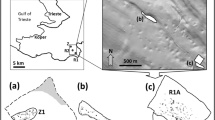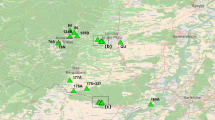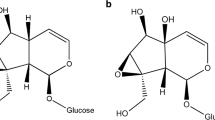Abstract
Understanding host plant preference and the relative quality of resource provided by co-occurring host plants is a key step to predict butterfly species abundance and responses to environmental changes, and, consequently, to plan management measures. Zerynthia cassandra is an Italian endemic species strongly dependent on the availability of its host plants, Aristolochia rotunda and Aristolochia lutea. The insular population occurring on Elba island (Tuscan Archipelago) is highly threatened, because of limited host plant distribution, small population size and apparent lack of gene flow with the mainland. In 2017, we carried out field surveys and rearing experiments to (i) identify the characteristics of the host plants (vegetative status) and the site characteristics (aspect, irradiation, distance from other patches) correlated with the number of eggs occurring on individual plants, (ii) compare larval growth, food-conversions rate and larval and adult survivorship on the two host plants species. Egg occurrence depends on patch irradiation, the number of leaves and flowers occurring on individual plants and the occurrence of nearby patches. These findings allowed to identify the optimal Aristolochia patch features for egg laying and development. Laboratory rearing success was higher than 50% and although plant species did not show a significant effect on oviposition, we found that larval and adult survival was higher on A. rotunda. Our results suggest habitat management aimed at increasing resource availability for Z. cassandra and possible ex-situ conservation actions aimed at recovering the population in case of potential catastrophic events.



Similar content being viewed by others
References
Balletto E, Bonelli S, Barbero F, Casacci LP, Sbordoni V, Dapporto L, Scalercio S, Zilli A, Battistoni A, Teofili C, Rondinini C (2015) Lista Rossa IUCN delle Farfalle Italiane-Ropaloceri. Comitato Italiano IUCN Ministero dell’Ambiente e della Tutela del Territorio e del Mare, Rome
Bonelli S, Cerrato C, Loglisci N, Balletto E (2011) Population extinctions in the Italian diurnal lepidoptera: an analysis of possible causes. J Insect Conserv 15:879–890. https://doi.org/10.1007/s10841-011-9387-6
Bryk F (1932) Neue Thais-Rassen. Parnassiana 2:66
Burnham KP, Anderson DR (2002) Model selection and multimodel inference: a practical information-theoretic approach, 2nd edn. Springer, New York
Camerini G, Groppali R, Minerbi T (2018) Observations on the ecology of the endangered butterfly Zerynthia cassandra in a protected area of Northern Italy. J Insect Conserv 22:41–49. https://doi.org/10.1007/s10841-017-0036-6
Celik T (2012) Adult demography, spatial distribution and movements of Zerynthia polyxena (Lepidoptera: Papilionidae) in a dense network of permanent habitats. Eur J Entomol 109:217
Curtis RJ, Brereton TM, Dennis RLH et al (2015) Butterfly abundance is determined by food availability and is mediated by species traits. J Appl Ecol 52:1676–1684. https://doi.org/10.1111/1365-2664.12523
Dapporto L (2009) Speciation in Mediterranean refugia and post-glacial expansion of Zerynthia polyxena (Lepidoptera, Papilionidae). J Zool Syst Evol Res. https://doi.org/10.1111/j.1439-0469.2009.00550.x
Dapporto L, Dennis RLH (2008) Island size is not the only consideration. Ranking priorities for the conservation of butterflies on Italian offshore islands. J Insect Conserv 12:237–249. https://doi.org/10.1007/s10841-008-9150-9
Dapporto L, Cini A, Menchetti M et al (2017) Rise and fall of island butterfly diversity: understanding genetic differentiation and extinction in a highly diverse archipelago. Divers Distrib 23:1169–1181. https://doi.org/10.1111/ddi.12610
Dennis RLH (2010) A resource-based habitat view for conservation: butterflies in the British landscape. Wiley, Chichester
Dennis RL, Dapporto L, Shreeve TG et al (2008) Butterflies of European islands: the implications of the geography and ecology of rarity and endemicity for conservation. J Insect Conserv 12:205–236
Fattorini S (2009) Both Recent and Pleistocene geography determine animal distributional patterns in the Tuscan Archipelago. J Zool 277:291–301. https://doi.org/10.1111/j.1469-7998.2008.00540.x
Fleishman E, Ray C, Sjogren-Gulve P et al (2002) Assessing the roles of patch quality, area, and isolation in predicting metapopulation dynamics. Conserv Biol 16:706–716. https://doi.org/10.1046/j.1523-1739.2002.00539.x
Fournier DA, Skaug HJ, Ancheta J et al (2012) AD Model Builder: using automatic differentiation for statistical inference of highly parameterized complex nonlinear models. Optim Methods Softw 27:233–249. https://doi.org/10.1080/10556788.2011.597854
Ghesini S, Magagnoli S, Marini M (2018) Biology and conservation of Zerynthia cassandra (Lepidoptera, Papilionidae) in semi-natural environments and agricultural landscapes. J Insect Conserv 22:151–161. https://doi.org/10.1007/s10841-018-0049-9
Jordano D, Gomariz G (1994) Variation in phenology and nutritional quality between host plants and its effect on larval performance in a specialist butterfly, Zerynthia rumina. Entomol Exp Appl 71:271–277. https://doi.org/10.1111/j.1570-7458.1994.tb01794.x
Krauss J, Steffan-Dewenter I, Müller CB, Tscharntke T (2005) Relative importance of resource quantity, isolation and habitat quality for landscape distribution of a monophagous butterfly. Ecography 28:465–474. https://doi.org/10.1111/j.0906-7590.2005.04201.x
Lewis OT, Thomas CD (2001) Adaptations to captivity in the butterfly Pieris brassicae (L.) and the implications for ex situ conservation. J Insect Conserv 5:55–63
Murphy SM (2004) Enemy-free space maintains swallowtail butterfly host shift. Proc Natl Acad Sci 101:18048–18052. https://doi.org/10.1073/pnas.0406490102
Nardi E (1984) The genus «Aristolochia» L. (Aristolochiaceae) in Italy. Webbia 38:221–300. https://doi.org/10.1080/00837792.1984.10670308
Rausher MD, Feeny P (1980) Herbivory, plant density, and plant reproductive success: the effect of Battus philenor on Aristolochia reticulata. Ecology 61:905–917. https://doi.org/10.2307/1936760
Redford KH, Amato G, Baillie J et al (2011) What does it mean to successfully conserve a (vertebrate) species? BioScience 61:39–48. https://doi.org/10.1525/bio.2011.61.1.9
Scriber JM, Lederhouse RC (1983) Temperature as a factor in the development and feeding ecology of tiger swallowtail caterpillars, Papilio glaucus (Lepidoptera). Oikos. https://doi.org/10.2307/3544203
Sforzi A, Bartolozzi L (2001) Libro rosso degli insetti della Toscana. ARSIA, Firenze
Slancarova J, Vrba P, Platek M et al (2015) Co-occurrence of three Aristolochia -feeding Papilionids (Archon apollinus, Zerynthia polyxena and Zerynthia cerisy) in Greek Thrace. J Nat Hist 49:1825–1848. https://doi.org/10.1080/00222933.2015.1006281
Thompson JN, Pellmyr O (1991) Evolution of oviposition behavior and host preference in Lepidoptera. Annu Rev Entomol 36:65–89. https://doi.org/10.1146/annurev.en.36.010191.000433
Valimaki P, Itamies J (2005) Effects of canopy coverage on the immature stages of the Clouded Apollo butterfly [Parnassius mnemosyne (L.)] with observations on larval behaviour. Entomol Fenn 16:117–123
Vovlas A, Balletto E, Altini E et al (2014) Mobility and oviposition site-selection in Zerynthia cassandra (Lepidoptera, Papilionidae): implications for its conservation. J Insect Conserv 18:587–597. https://doi.org/10.1007/s10841-014-9662-4
Witzenberger KA, Hochkirch A (2011) Ex situ conservation genetics: a review of molecular studies on the genetic consequences of captive breeding programmes for endangered animal species. Biodivers Conserv 20:1843–1861. https://doi.org/10.1007/s10531-011-0074-4
Zinetti F, Dapporto L, Vovlas A et al (2013) When the rule becomes the exception. No evidence of gene flow between two Zerynthia cryptic butterflies suggests the emergence of a new model group. PLoS ONE. https://doi.org/10.1371/journal.pone.0065746
Acknowledgements
We thank Umberto Mazzantini, Dr. Brunella Perito, Dr. Bruno Foggi for helping in collecting the data. The study has been conducted in collaboration with the Tuscan Archipelago National Park.
Funding
Funds were provided to LD by the University of Florence and by the Ministero dell’Ambiente e della Tutela del Territorio e del Mare, through the project “Insetti di valore conservazionistico: presenza, status e interazioni con specie di fitopatogeni”, Progetto di sistema of Italian National Parks, “Biodiversità” directive.
Author information
Authors and Affiliations
Corresponding author
Ethics declarations
Conflict of interest
The authors declare that they have no conflict of interest.
Ethical approval
This article does not contain any studies with human participants performed by any of the authors. Any applicable international, national, and/or institutional guidelines for the care and use of animals were followed. Specimens were collected and reared in the laboratory after permission from the Italian Ministero dell’Ambiente e della Tutela del Territorio e del Mare (Prot. 0012493/PNM 24/06/2015).
Rights and permissions
About this article
Cite this article
Cini, A., Bordoni, A., Ghisolfi, G. et al. Host plant selection and differential survival on two Aristolochia L. species in an insular population of Zerynthia cassandra. J Insect Conserv 23, 239–246 (2019). https://doi.org/10.1007/s10841-018-0105-5
Received:
Accepted:
Published:
Issue Date:
DOI: https://doi.org/10.1007/s10841-018-0105-5




